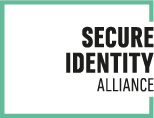Digital Identity – learning from a crisis
An immediate analysis of the coronavirus crisis highlights, among other things, the significant and growing role of technology in general, and digital identity in particular, in helping citizens, businesses and government agencies adapt and respond.
With citizens in many countries forced into homeworking and home-schooling, most at incredibly short notice, many millions turned to digital tools to communicate, collaborate, work and transact online. While these proved helpful for knowledge workers and those businesses with flexible (and often cloud-based) IT infrastructures, the crisis uncovered huge areas for improvement.
This was particularly clear when it came to access to the provision of public services – many of which lacked a cohesive digital alternative to face to face interactions. At the heart of the issue was the lack of a digital identity that would allow citizens to securely access services remotely.
For those citizens unable to access basic public services and social protections in a digital context, this lack of a digital identity and a connected ecosystem of digital service caused considerable problems.
This, Secure Identity Alliance (SIA) believes, is one of the key learnings to take away from the crisis. A secure and universally trusted digital identity, based on a government root and sourced from civil registries, is fundamental to the development of a wider ecosystem of both public and private services.
Without this, any period of disruption to face to face activities will continue to cause problems for societies across the world. Just as we saw during the worst months of the crisis.
Pandemics aside, a secure and trusted digital identity is as vital to the fair and inclusive provision of digital public services as it is to the economic health of a country. But it is not enough to simply recognize these facts. Action needs to be taken.
As we move beyond the crisis, let’s take advantage of planned economic recovery strategies to integrate secure digital identity into the everyday lives of citizens and businesses. The recent crisis has shown that the lack of digital identity has had a very real impact on citizens and service provision in many countries. There is an opportunity to do something about that today.
Why locked-down shouldn’t have meant locked out
To ensure social protections (particularly during a crisis), public services should be accessible in all circumstances, and by all. But after weeks of social isolation and distancing measures imposed by national governments in response to COVID-19, many millions of citizens struggled to do so.
What should have been a straightforward (and legally mandated) task, such as registering a birth, for example, was impossible for many because of the face-to-face nature of the service in many countries and the lack of secure, digital alternatives.
Other every-day public service interactions, such as collecting a pension payment or cashing a social security cheque, also represented major challenges for citizens in all but a small number of digitally-advanced countries – and created severe financial hardship for many.
It wasn’t only public services. In the private sector, signing mortgage agreements and other legal papers remain still largely face-to-face activities. When lock-down measures were in force, and travel restrictions imposed, these types of transactions were often impossible to undertake.
COVID-19 responses around the world
Contrast these challenges with the ease of access in Estonia, for example. Here, the ubiquitous provision of trusted digital identity, using eID cards or mobile IDs as an authentication method, allowed government and private services to be securely accessed online. This article explores how Estonia’s digital infrastructure ensured locked-down citizens weren’t locked out.
Latvia also took steps to enable service provision during the crisis with its eParaksts mobile. This mobile ID app provided secure authentication into the country’s eParaksts.lv portal, as well as verifying user identity to electronically sign documents and securely access a range of digital public and private services.
In Italy, the government encouraged citizens to use their latest generation eID card to create a digital ID to access public services during the crisis. This article outlines how.
Elsewhere, as this blog from GSMa illustrates, governments accelerated digital ID adoption in response to the COVID-19 – with examples from India, Jamaica, and South Korea and more.
These secure and trusted government-derived digital identity services can have a truly transformational impact, allowing citizens to securely interact and transact online with healthcare, financial services providers and more. And not just during the kind of crisis we are only beginning to recover from, but during any period of disruption and throughout the course of their normal daily lives.
In short, this digital approach ensures critical public services can function without disruption at any time.
Mobile identity in healthcare
COVID-19 remains a global health crisis that not only impacts those with the virus, but also those suffering other conditions. Across the world, visits to doctor surgeries and emergency rooms fell dramatically. There was (and still is) real concern that many people were at risk because of their understandable reluctance to visit hospitals.
Telehealth services – using video conferencing for consultations and initial diagnosis – are not a new idea. However, the sensitive (and regulated) nature of these services means an appropriate level of patient identification is required. Here, a secure digital ID would not only provide secure authentication to the eHealth platform, but also allow the digital issuance of ePrescriptions by healthcare professionals.
Going beyond the above, digital (and digital identity) is a critical component in supporting effective patient pathways and enabling truly integrated models of care. SIA has long been involved in exploring these opportunities.
In 2018, SIA collaborated with COCIR, the European Trade Association representing the medical imaging, radiotherapy, health ICT and electromedical industries, to develop key recommendations to leverage identity in healthcare.
Maintaining privacy and control
While the majority of citizens were asked to stay at home during the crisis, millions of key workers – including those in the healthcare, transportation, education, food production and public safety sectors, remained active. In some countries, we saw challenges with key workers struggling to prove their status to police and others tasked with maintaining lock-down.
Here, mobile ID (and more specifically, mobile driver licences) could have offered a solution. In this case, a citizen’s data is held on a secure app on their phone. As well as containing all key information – name, age, address, photo ID, changes in driving status, etc. these apps could also include a credential added to show ‘key worker’ status.
Not only would this enable rapid physical authentication by authorities to confirm citizens have permission to travel, individuals would not have to expose any unnecessary personal information held on their licence (just their ‘key worker’ permission).
This ability to ‘select’ only the data needed to prove identity in a given situation, without showing any additional personal details, allows citizens to stay in control of their data and is a fundamental tenant of mobile identity.
Developing trusted digital identity
Many countries are already engaged on the path of digitalisation. Experience during the current crisis may have the effect of accelerating these initiatives. Indeed, Secure Identity Alliance' s Members have been (and are) working with governments across the world to support a range of trusted digital ID initiatives.
For those yet to embark on the digital journey, or to extend identity into the mobile sphere, SIA has published a blog outlining the rise of mobile ID and the key considerations when planning and implementation.
Supporting governments and citizens across the world
The coronavirus crisis certainly shone a spotlight on the importance of being able to continue to provide citizens with both public and private services in a digital context. And for this, trusted identity is the cornerstone.
Secure Identity Alliance's membership is working closely with governments to explore the art of the possible – both to address the shorter term issues presented by COVID-19 and to drive the development of inclusive digital identity services that are necessary for sustainable, worldwide social protection and economic growth.


